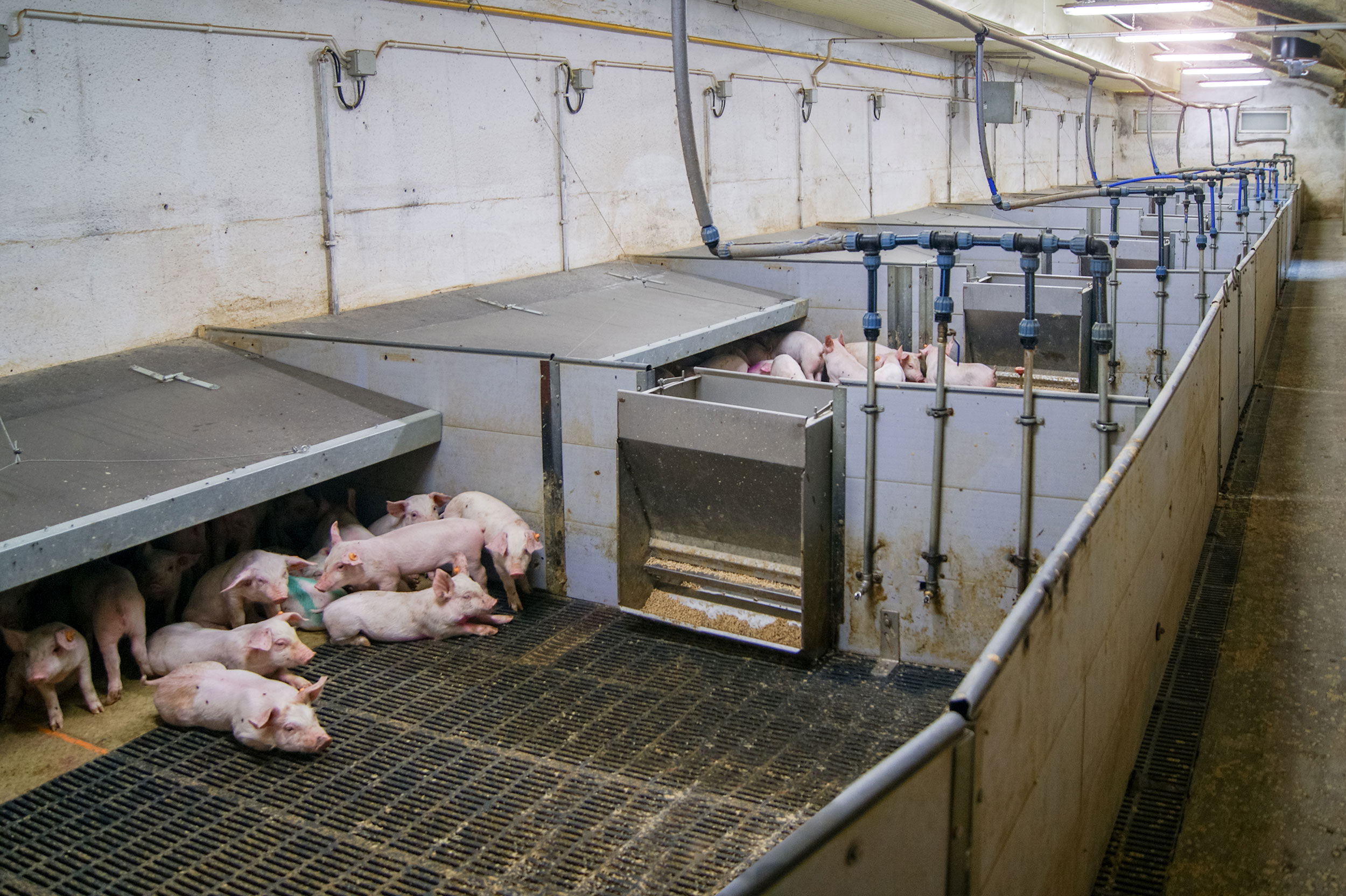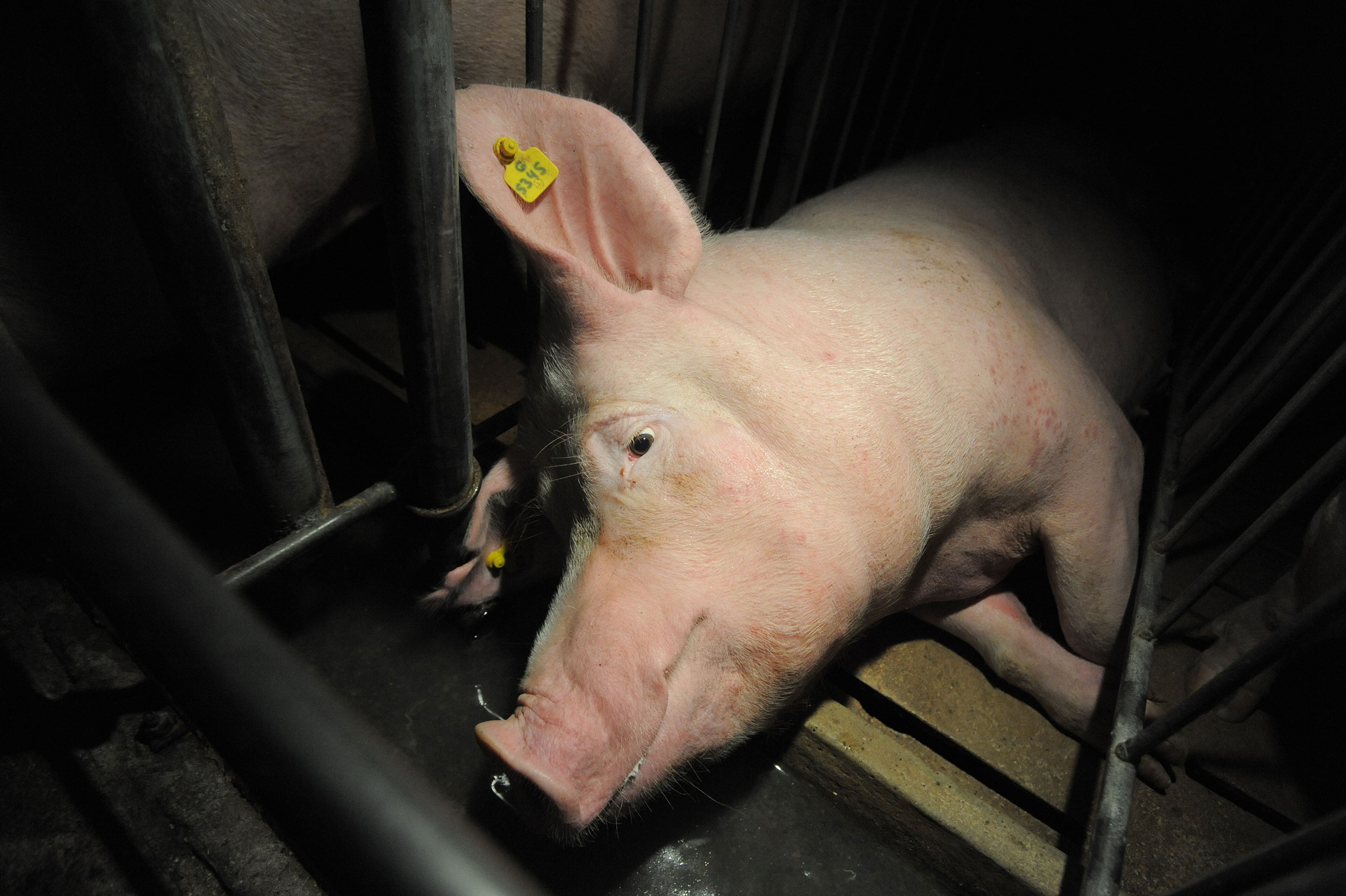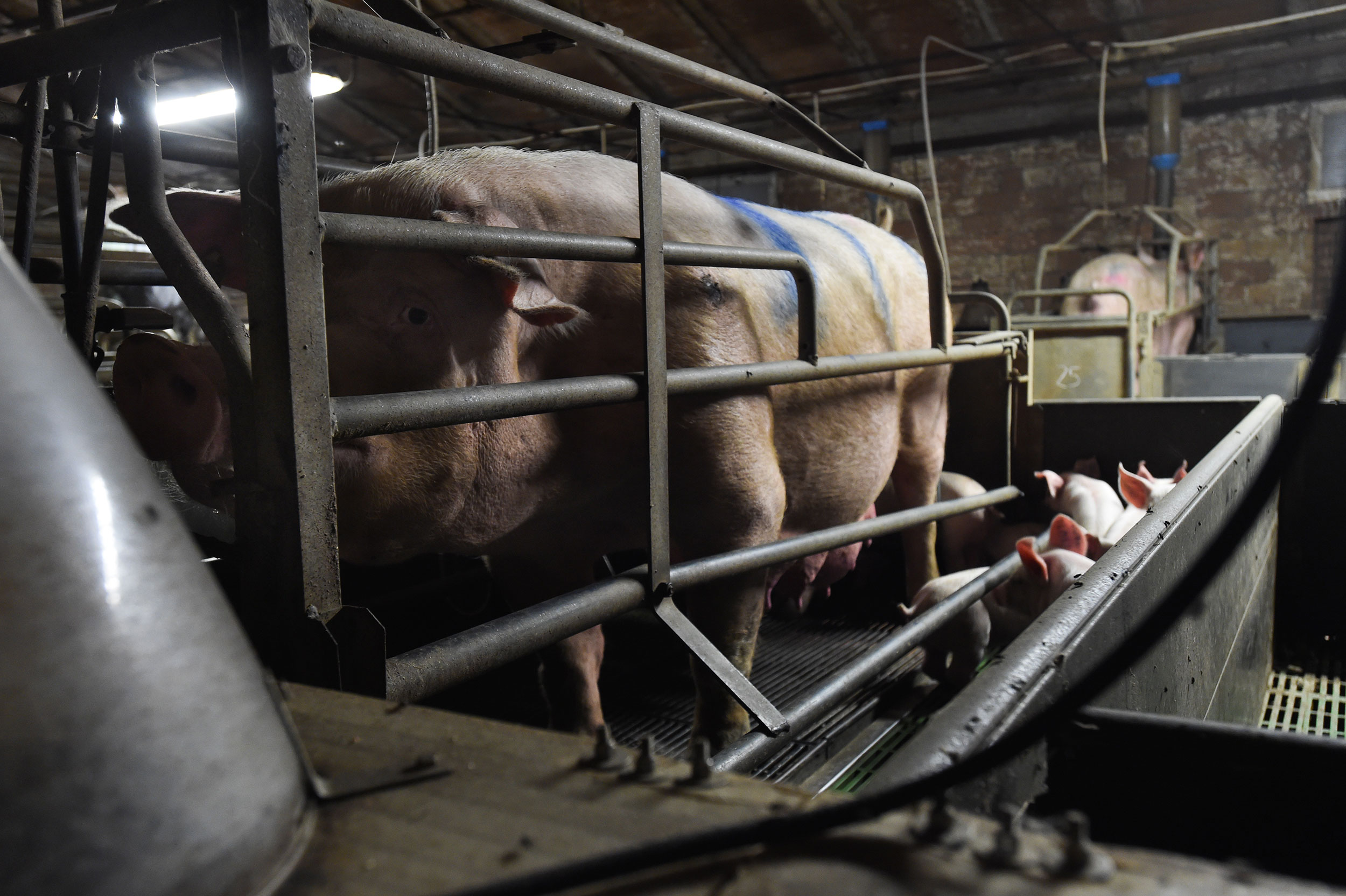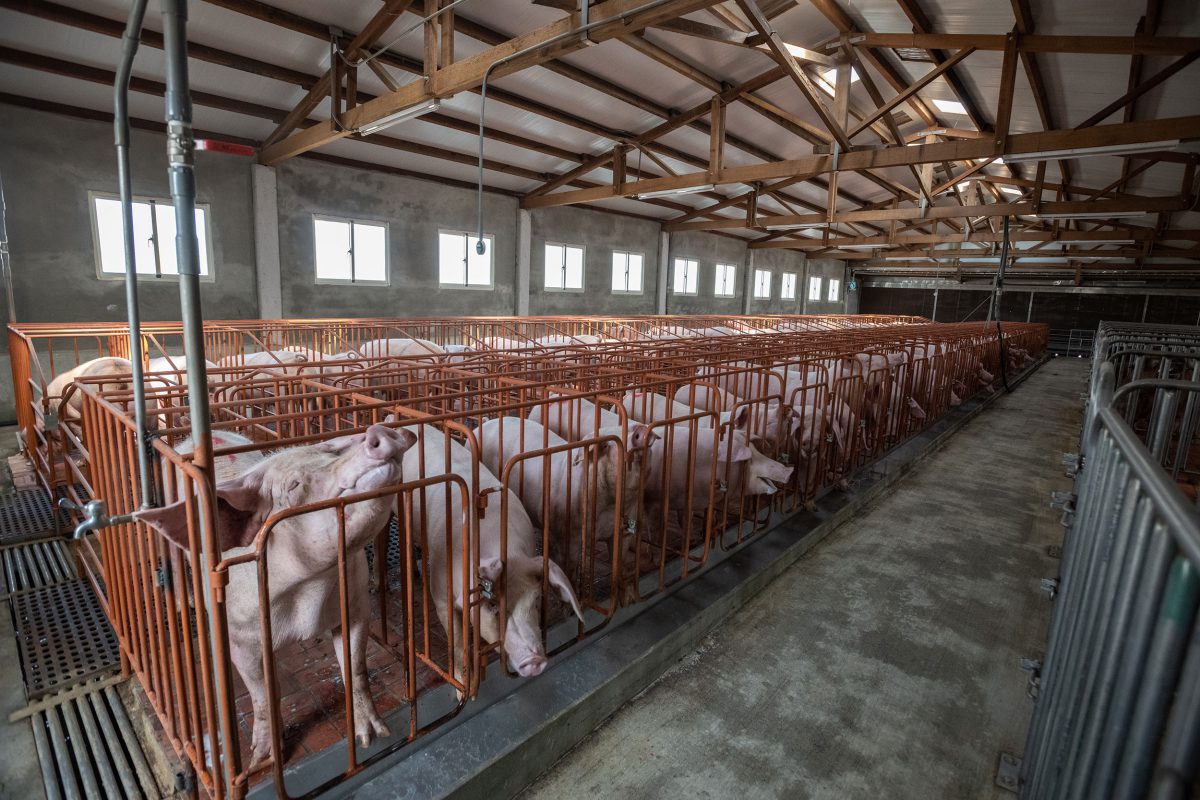
Pig Factory Farms
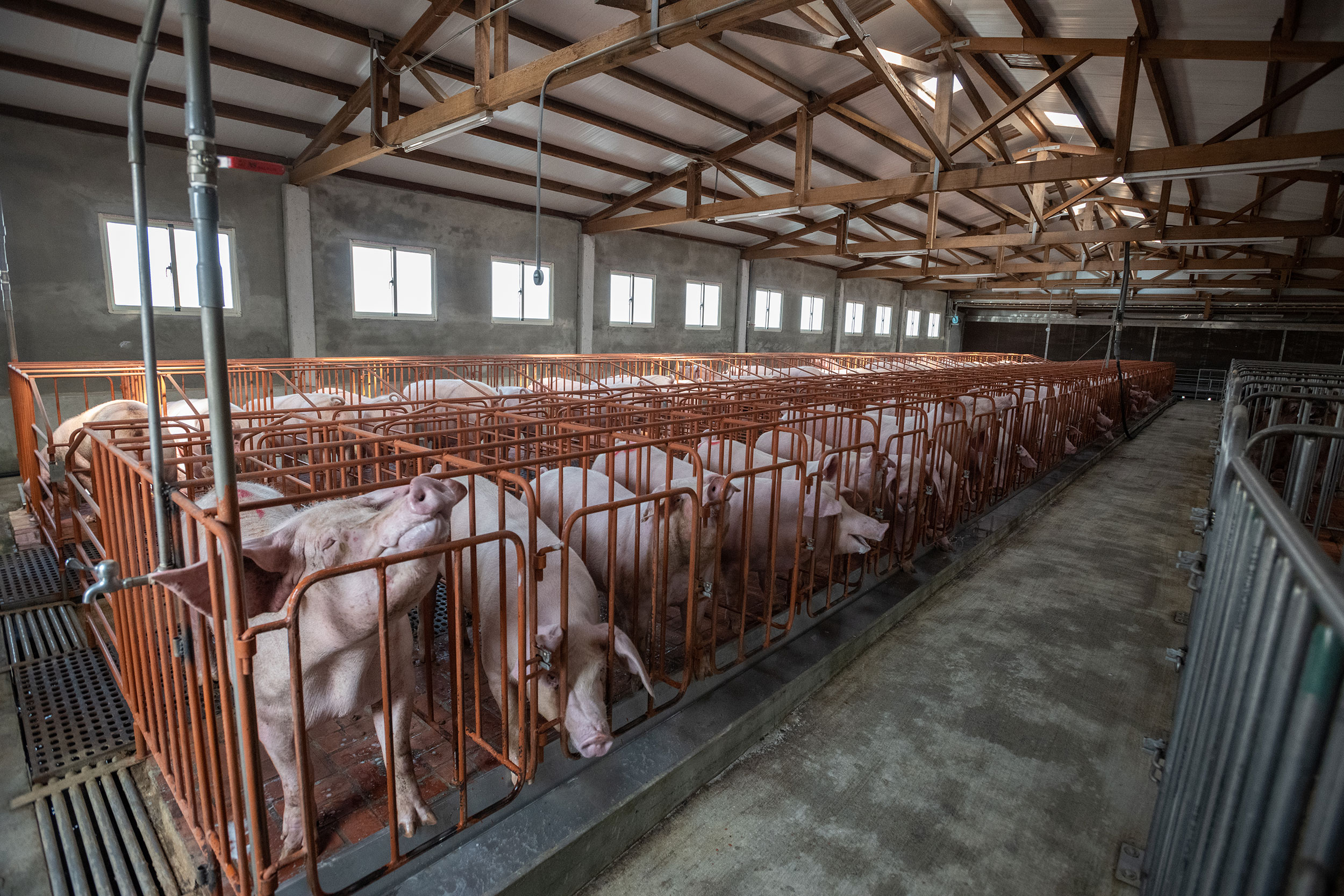
Life for pigs on factory farms is a living hell. Each year in the US approximately 120 million pigs are killed for food, with the overwhelming majority of them raised indoors on factory farms. They are kept in intensively cramped and overcrowded conditions, and many never experience fresh air and sunlight until the last days of their lives when they are transported to slaughter. Female pigs or “sows” are artificially inseminated repeatedly, and often moved when pregnant to gestation crates, where they can barely move. These tiny crates are banned in nine states, and are extremely inhumane. They contain no bedding materials, and are usually floored with slatted plastic, concrete or metal to allow their waste to fall below. Several days before giving birth they are moved to farrowing crates, which are only slightly larger so they can lay down.
Their babies are born into a world of unimaginable cruelty. Within days of birth, their teeth are clipped so they don’t damage their mothers teats or injure their siblings, often leading to injuries, inflammation and abscesses. They are then subjected to tail docking, which is the cutting off of the ends of their sensitive tails, to prevent tail biting of other pigs. This behavior is common as the pigs are bored and stressed in the packed overcrowded enclosures. Tail docking is extremely painful and often leads to infections. Soon after they are subjected to ear notching (for identification purposes), and male piglets are castrated within 14 days. This is done to prevent ‘boar taint, which is the undesirable smell and odor of uncastrated male pig meat. It is also done to reduce aggression. It is important to note that all of these procedures are routinely done without any anesthesia or pain relief, and that they often lead to injury and infections.
Sick and injured piglets, as well as the runts of the litter that are smaller and will not generate significant profit, are killed. They are most commonly killed by PAC (Pounding Against Concrete) a practice that is as horrible as it sounds. It literally means holding a baby piglet by the hind legs and smashing it against the concrete floor to kill it. This causes massive head trauma, and results in death, although it’s not always instantaneous. Furthermore it is done right in front of the mother and siblings. Shockingly this practice is so commonplace that it is one of the suggested euthanasia methods listed by the USDA (United States Department of Agriculture) for piglets. On the USDA official government website under “AVMA Guidelines for Euthanasia of Animals:2020 Edition” under M3.4 “Manually Applied Blunt Force Trauma To The Head”, they do recommend using other methods, but list the below as advantages and disadvantages to this heinous form of euthanasia.
They are most commonly killed by PAC (Pounding Against Concrete) a practice that is as horrible as it sounds
Advantages—(1) Blunt force trauma applied manually to the head is inexpensive and effective when performed correctly. (2) Blunt force trauma does not chemically contaminate tissues.
Disadvantages—(1) Manually applied blunt force trauma is displeasing for personnel who have to perform it. (2) Repeatedly performing manually applied blunt force trauma can result in personnel fatigue, loss of efficacy, and humane concerns. (3) Trauma to the cranium can damage tissues and interfere with diagnosis of brain diseases.
While the entire list of advantages and disadvantages is shocking, I am still stuck on the first disadvantage, that it is “displeasing for personnel who have to perform it”. There is absolutely no regard for these animals as feeling sentient beings.
As they get older they are pumped with hormones to make them grow faster, and antibiotics, as the farms are rife with disease. The crowded, unsanitary conditions and elevated level of ammonia from the urine and excrement make for an environment prone to bacteria, viruses, and other airborne illnesses. Furthermore they exhibit many behavioral problems as a result of stress and extreme confinement.
Pigs on factory farms are born into a dark world with unimaginable pain and suffering inflicted upon them throughout their short lives. The procedures they endure are traumatic and frightening. They are taught to fear humans from the day they are born, and never see the light of day until they are slaughtered.
